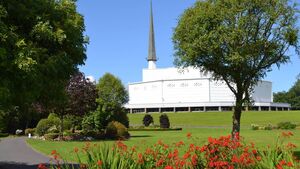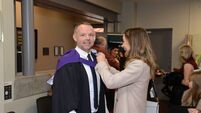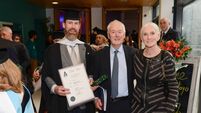Knock project hailed as 'model for others'

A biodiversity project at Knock Shrine has proved very successful and is to be used as a model for other parishes interested in dedicating parts of their church grounds to nature.
Sheila Murphy, Biodiversity Officer with Mayo Co Council, told a meeting of the Environment and Climate Change Strategic Policy Committee (SPC) that the return-to-nature project came about after a Papal appeal asking parishes to set aside 30% of church grounds as a haven for biodiversity.
“Feedback in Knock has been very positive and we hope to bring similar projects on in other parishes and we are very grateful to Fr Richard Gibbons [Knock rector] for coming on board so positively.”
Ms Murphy outlined a range of other measures being taken across the county under the Local Biodiversity Action Fund, from which Mayo received €96,000. These include a hedgerow survey, a Himalayan Balsam control programme, wetlands developments, a clean-up of the Castlebar River and the Castlebar Town Park Biodiversity Enhancement project.
Ms Murphy also referenced the Invasive Species Eradication Programme for West Connacht Islands which is being run in conjunction with Mayo County Council, Galway County Council and the islands of Inisbofin and Clare Island.
"This is already proving very interesting, with surveys carried out on all public lands there plus horticulture and general good gardening practice workshops while work is also ongoing with schools.”
Posters now being displayed on ferries to and from the islands reminding people to wipe boots, bikes and tents before alighting on the islands in order to ensure they do not bring anything harmful ashore.
Ms Murphy said people have a right to be concerned about biodiversity, given that over half of native Irish plant species have declined. She outlined threats to biodiversity which include invasive plant species such as rhododendron and Japanese Knotweed, and practices such as overgrazing, undergrazing and land abandonment. Water and air pollution also pose a danger as does habitat loss removal through cutting hedgerows and treelines.
She said the council is engaging with people more and providing education and support to the many community groups in Mayo now actively involved in biodiversity. A working group is drawing up a Biodiversity Action Plan for the next five years that will be completed in 2026 and the public is invited to make submissions.
- Published as part of the Local Democracy Reporting Scheme.






